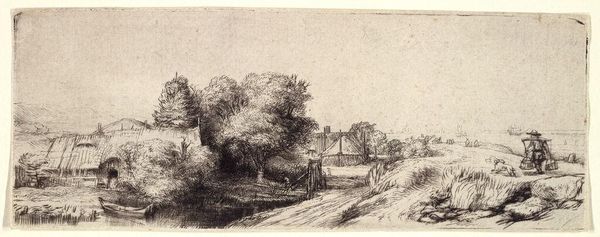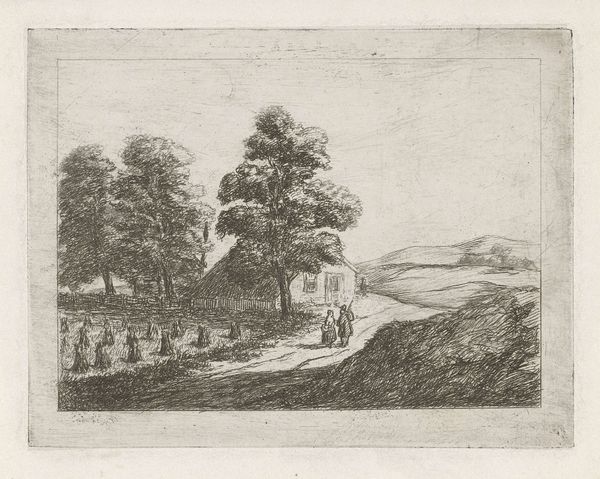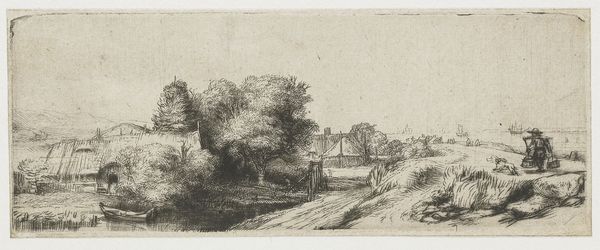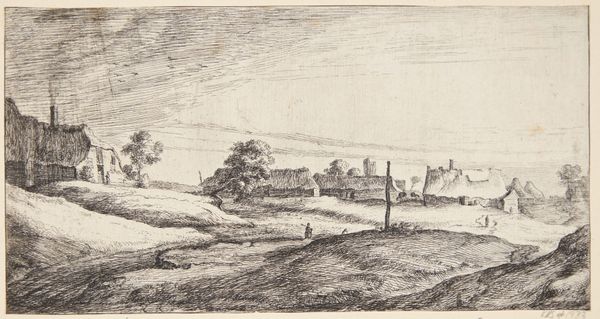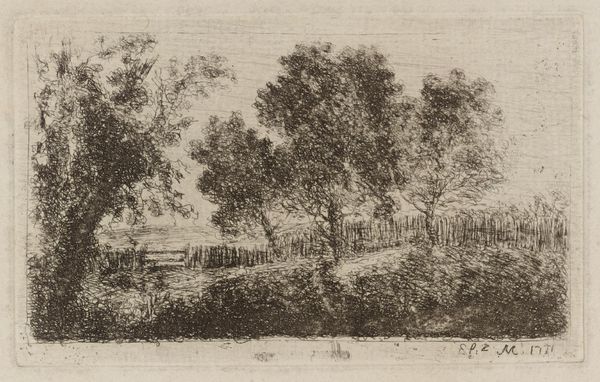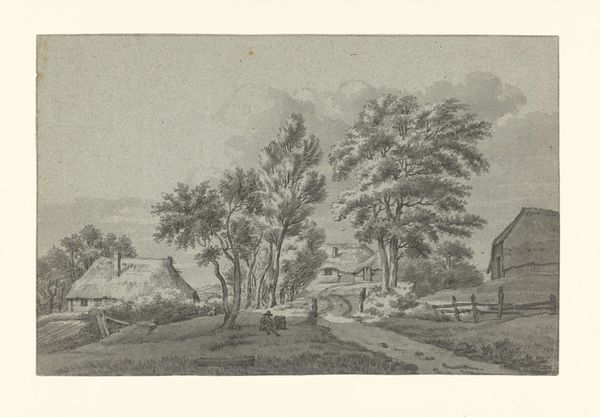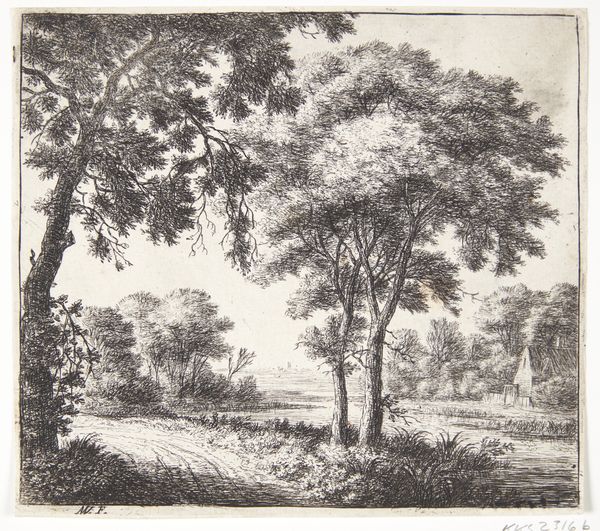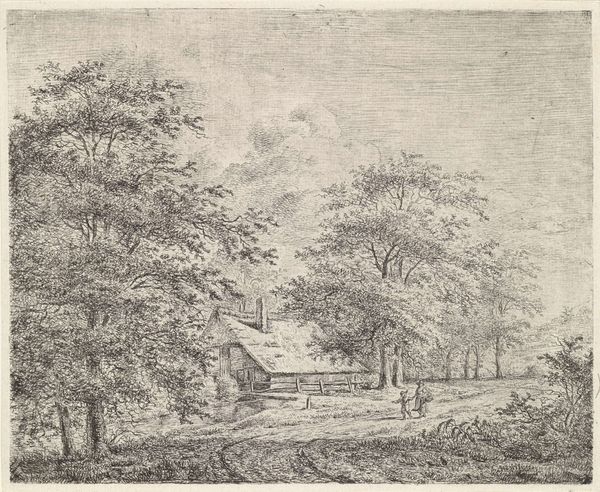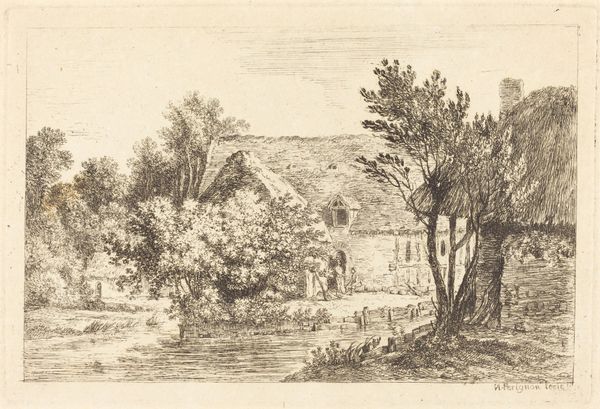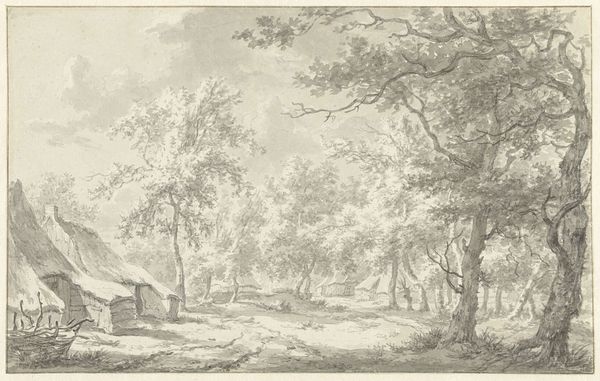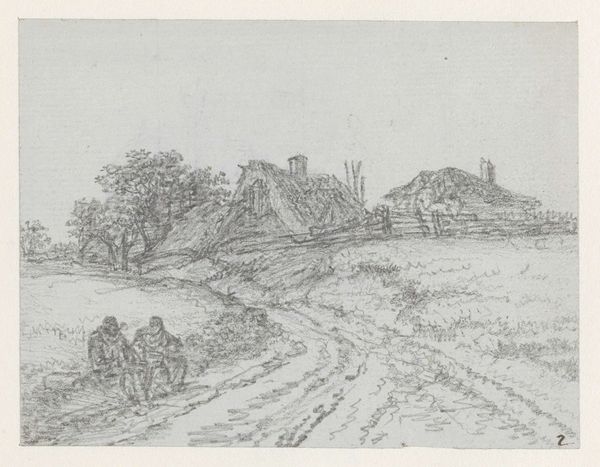
drawing, print, etching
#
drawing
#
dutch-golden-age
# print
#
etching
#
landscape
#
realism
Dimensions: 7 x 17 cm
Copyright: Public domain
Curator: Here we have Rembrandt van Rijn's etching, "A Peasant Carrying Milk Pales," created around 1650. It’s a fantastic example of Dutch Golden Age printmaking. Editor: It’s really quite a humble image. There's a beautiful sense of texture despite the limited tonal range. I can almost feel the coarse dirt road. Curator: Indeed. Rembrandt's etchings often elevated everyday life. This seemingly simple scene reveals a great deal about the rural context in which Rembrandt worked, providing insight into the lives of ordinary people through a new lens. The milkmaid likely represents the labor force in Amsterdam’s ever-expanding food supply chain. Editor: Exactly! Look closely at the marks; they're not just descriptive. They speak to a direct, almost visceral engagement with materials. This wasn’t just observation; it was hands-on work translating that experience onto the copper plate using mordants and careful timing. We should always be mindful of labor. Curator: The placement of the peasant at the periphery draws our eye across the image towards the horizon, offering a perspective that's less focused on the individual and more on the larger societal picture. It highlights the role of rural laborers within Dutch society. Editor: Agreed, but think about what it means to portray work. The image becomes both a record of labor and, through circulation as a print, also a commodity in itself. Its meaning as art transforms its content from the straightforward realities of rural existence. Curator: It reminds us that art isn't created in a vacuum. This pastoral scene emerges from a nexus of urban consumption and aesthetic taste. It’s quite complex. Editor: So true. It’s a testament to how artistic vision is profoundly connected to the ways we produce, circulate, and consume images and things. A reminder to consider the social processes by which art gets made. Curator: Indeed, Rembrandt gives us a rich tapestry that encourages us to consider how the realities of labor and landscape fit within a growing commercial and cultural framework. Editor: And understanding that adds further dimensions to an artwork we initially might have deemed only formally interesting.
Comments
No comments
Be the first to comment and join the conversation on the ultimate creative platform.
